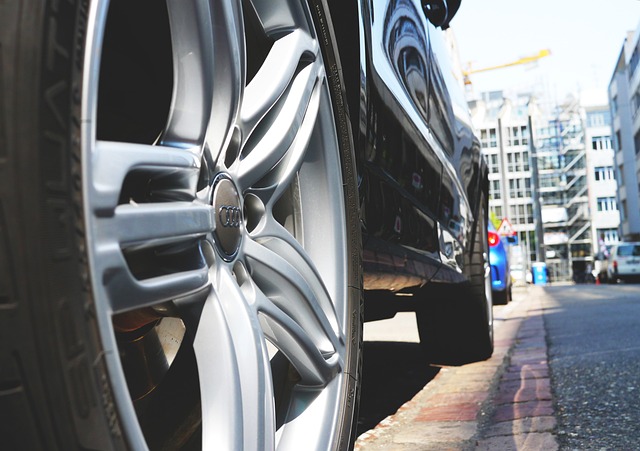Did you know that a clogged car radiator, coolant leakages, and quality radiators can lead to engine overheating, causing significant damage and costly repairs? Recognizing the warning signs of a clogged radiator is crucial for maintaining your vehicle’s health and performance. These indicators should not be ignored, from strange engine noises to visible coolant leaks. In this post, we’ll explore the top 10 warning signs that your car radiator is clogged and give you some practical solutions on how to fix it. Stay tuned to learn how to prevent potential breakdowns and keep your car running smoothly.
Symptoms of a Clogged Radiator
Unusual Engine Performance
Unusual engine performance can be an early indicator that your radiator is experiencing issues. If you notice your car struggling to accelerate or experiencing a loss of power, it could be a sign of a common radiator clog symptom.
Keep an eye out for any faulty radiator symptoms such as the engine misfiring, hesitating, or stalling unexpectedly. These issues may arise due to the restricted flow of coolant caused by a clogged radiator.
Temperature Gauge Readings
Changes in temperature gauge readings while driving are key indicators of a clogged radiator. If you observe your temperature gauge fluctuating between hot and cold frequently, it could signify a bad radiator symptom.
A symptom of a clogged radiator affecting the temperature gauge is overheating. If your engine starts to overheat more than usual or frequently, it’s crucial to address the radiator clog promptly to prevent further damage.
Unusual Noises from Engine Compartment
Monitoring for any unusual noises coming from the engine compartment is essential in detecting radiator issues. Strange sounds, such as hissing, gurgling, or bubbling noises, could indicate air pockets or blockages within the radiator system.
If you hear unusual noises, it’s vital to investigate further as they may be symptoms of a clogged radiator. Addressing these issues promptly can prevent potential overheating and engine damage.
Overheating Engine
Signs of Overheating
One of the warning signs that your car radiator is clogged is an overheating engine. This can manifest as steam or smoke billowing from the hood. If you notice these signs, it’s crucial to address the issue promptly.
Fluctuating Temperature Gauge Readings
Another way to recognize a clogged radiator is through fluctuating temperature gauge readings. When the radiator is clogged, the engine struggles to maintain optimal temperatures, causing the gauge to fluctuate erratically. Ignoring this can result in serious engine problems.
Potential Engine Damage
Understanding the consequences of prolonged overheating is essential. If a clogged radiator leads to continuous overheating, it can cause significant damage to the engine. This damage can be costly to repair and may even require a full engine replacement.
Coolant Discoloration
Examine Coolant
Check the coolant in your car’s radiator for any discoloration. If you notice brown or rusty hues, it could indicate contamination, which might be a sign of a clogged radiator.
Look for Debris
Inspect the coolant for any particles or debris floating in it. The presence of these elements can be a strong indicator that your radiator is beginning to clog.
Assess Clarity
Assess the clarity of the coolant in your radiator. If the liquid appears murky instead of clear, it could be a sign that there are issues with your radiator.
Coolant Leaks
Inspect Leaks
Inspect for puddles or spots under the vehicle, indicating leaks. Look out for any signs of coolant leaks that may have dripped onto the ground beneath your car.
Check hoses and connections
- Check hoses and connections for signs of wear or damage that may cause leaks.
- Look for any cracks, holes, or loose fittings that could be contributing to radiator leaks.
Inadequate Cooling
Recognize that coolant leaks can lead to inadequate cooling and overheating.
- If left unaddressed, coolant leakages can result in system defects and severe automotive issues.
- Proper cooling is essential to prevent temperature issues and maintain your engine’s health.
Sweet Antifreeze Smell
Detect Odor
When you detect a sweet odor around the engine bay, it could be a sign of coolant leaks. This smell is distinct and often indicates a compromised cooling system.
Investigate Source
To prevent further engine damage, it is crucial to investigate the source of this sweet antifreeze smell. Ignoring it could lead to serious radiator issues that may result in costly repairs.
Rust on Radiator
Visible Rust
Look for visible rust or corrosion on the radiator surface. Corroded radiators are a common issue that can lead to significant problems if left unaddressed.
Rust acts as a warning sign of potential trouble within the radiator system. It indicates that the radiator is aging and may be prone to failure.
Impeded Coolant Flow
Identify rust as a sign of aging and potential failure of the radiator. When rust accumulates, it can impede the flow of coolant through the system. This obstruction can result in underperforming radiators and overheating issues.
Reduced Efficiency
Recognize that rust can impede coolant flow and reduce radiator efficiency. A damaged radiator due to rust will struggle to regulate the engine’s temperature effectively. This reduced efficiency can lead to radiator problems and ultimately affect the vehicle’s performance.
Sludge Build-Up
Check Deposits
Inspect your car radiator or coolant reservoir for thick, sludgy deposits that indicate potential issues. These deposits can accumulate over time and signify a clogging problem.
Blockage Concerns
Understand that sludge in the radiator can block coolant passages, hindering the proper flow of coolant through the system. This blockage can lead to overheating and other serious engine problems.
Prevention Measures
Recognize that regular maintenance practices are crucial in preventing sludge accumulation in your car’s radiator. Flushing the cooling system at recommended intervals can help maintain its efficiency.
Dashboard Warning Light
Engine Temperature
Pay attention to the dashboard warning light indicating high engine temperature. Ignoring this sign can lead to severe engine damage.
Act promptly by pulling over, letting the engine cool down, and checking the radiator for any clogs or leaks.
Coolant Levels
Monitor the coolant level warning light on your dashboard. Low coolant levels can result in overheating and engine failure if left unaddressed.
Check the coolant reservoir for any visible signs of clogs or blockages that may be affecting the radiator’s performance.
Prompt Response
Respond immediately to any dashboard warning lights related to the radiator. Delaying action can cause irreversible damage to your vehicle’s engine.
Consult a professional mechanic if you are unsure about how to resolve the radiator issue indicated by the warning lights.
Diagnosing a Clogged Radiator
Visual Inspections
Inspect the radiator visually for any visible signs of blockage such as rust or debris accumulated on the surface. Look out for corrosion or leaks that could indicate a clog.
Perform a thorough examination of the radiator fins to ensure they are not bent or damaged, hindering proper airflow. Check for obstructions that may impede the cooling process.
Pressure Testing
Conduct a pressure test on the radiator to evaluate the integrity of the cooling system. This test helps identify any leaks or weak spots in the system that could lead to blockages.
By pressurizing the system, you can pinpoint areas where coolant is escaping, indicating potential clogs. A leak-down test can also reveal if there are internal blockages within the radiator.
Coolant Flow Evaluation
Assess the coolant flow by feeling the temperature of the radiator hoses. Uneven temperatures along the hoses may indicate blockages preventing proper circulation.
Observe how quickly the coolant flows through the system when the engine is running. A slow or restricted flow could signify a clog in the radiator or other components of the cooling system.
Fixing and Preventing Clogs
Flushing Regularly
Flush the radiator regularly to remove debris and buildup that can lead to clogs. Over time, contaminants can accumulate in the radiator, hindering its efficiency. By flushing the system, you can prevent blockages and ensure optimal cooling performance.
Regular flushing is crucial for maintaining the radiator’s health. It helps eliminate any sediment or rust that may have accumulated, preventing potential clogs. This simple maintenance task can extend the lifespan of your radiator and prevent costly repairs in the future.
Coolant Replacement
When it comes to coolant replacement, it’s essential to replace old coolant with fresh fluid on a regular basis. Old coolant can break down over time, leading to corrosion and blockages in the radiator. By replacing it with new fluid, you can maintain optimal cooling efficiency.
Fresh coolant not only helps prevent clogs but also ensures that your engine operates at the right temperature. It contains additives that protect the radiator from rust and corrosion, prolonging its lifespan. Make sure to follow the manufacturer’s recommendations for coolant replacement intervals.
Routine Maintenance Checks
To ensure your radiator stays clog-free, schedule routine maintenance checks to identify and address potential issues early. During these checks, a professional mechanic can inspect the radiator for any signs of blockages or damage. Early detection allows for prompt repairs before more significant problems arise.
Routine maintenance is an essential part of preventing clogs in your radiator. By addressing minor issues early on, you can avoid major malfunctions that could leave you stranded on the road. Stay proactive with your maintenance schedule to keep your radiator in top condition.
Closing Thoughts
After learning about the warning signs of a clogged radiator and how to address them, you are now equipped to tackle this issue head-on. By recognizing symptoms like coolant discoloration, rust on the radiator, or sludge build-up, you can prevent serious problems such as engine overheating or coolant leaks. Remember to take prompt action if you notice any of these indicators to keep your car running smoothly.
Regular maintenance and early detection are key to ensuring your radiator stays clear and your engine stays cool. By following the diagnostic and preventive measures outlined in this guide, you can save yourself from costly repairs and unexpected breakdowns. Stay proactive in caring for your vehicle, and you’ll enjoy smoother drives and prolonged engine life.

Are You in Need of Expert Car Radiator Repair Services?
Discover the unmatched expertise of autoTECH Blackhawk in resolving clogged car radiator issues. Why choose autoTECH Blackhawk for your vehicle’s radiator repair needs? Our hallmark is our unwavering dedication to building lasting relationships with our customers, a crucial aspect in the intricate domain of car radiator systems and their maintenance. This commitment is the cornerstone of our personalized approach, ensuring that our radiator repair solutions are precisely tailored to meet your unique needs and objectives for your vehicle’s functionality and safety.
Whether you’re troubleshooting a persistent radiator clog, addressing issues with your car’s cooling system, ensuring the thermal reliability of your family vehicle, or seeking expert guidance on any radiator-related anomalies, autoTECH Blackhawk stands as your reliable ally. We are proud of our industry-leading 3-year/36,000-mile warranty and our promise to utilize only Original Equipment and manufacturer-recommended parts, guaranteeing your complete satisfaction with our radiator repair services. Don’t hesitate to contact our friendly team today to schedule a convenient and contactless consultation for your car’s radiator repair requirements!


